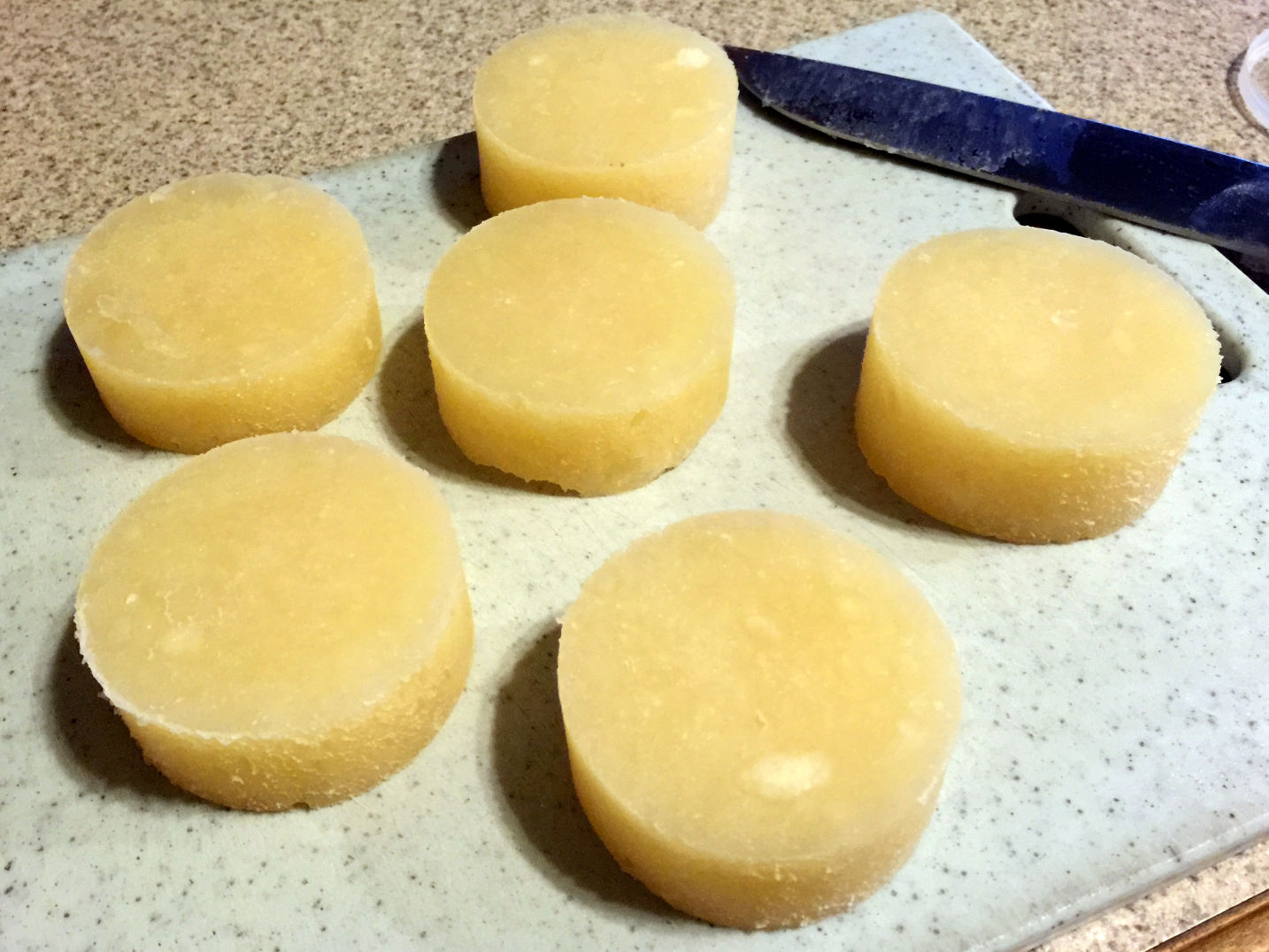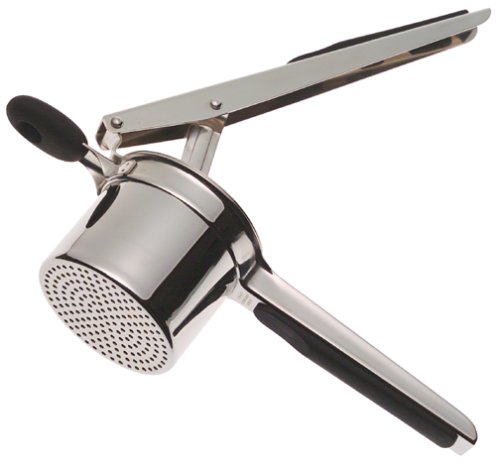LBussy
Well-Known Member
I don't remember which thread this was discussed - DeeAnna shared that she felt adding the lye to everything but the SA first, then mixing in the SA would lead to better homogenization. I started down this path with a question about one of my shave soaps and spots:

Those spots (I think) were less translucent areas that simply went away as the soap cured:

(This is getting down to the bottom so there is some see-through areas).
Here's one I did last night in a much larger batch:

Many more spots, potentially smaller. It got me to thinking. This time I used the SB when I added the lye. Could this be why the spots are smaller but there are more? A second related thought - this time I used a much larger crock-pot which had a harder time keeping the whole batch hot. There was often a thick layer on top which was more solidified that I stirred in. Did that help create the less translucent spots?
The first would lend credence to DeeAnna's theory, the second to the theory that these are dryer areas. I still don't know what the answer is. If I remember I'll try DeeAnna's method next time.
Second - this was my first use of EDTA in my shave soap. Following IrishLass' advice I used 0.5% of the total batch weight dissolved in water (I made a 30% solution by withholding a portion of my lye water - worked fine.) This was last night so I have not shaved with it yet but I did notice a very big difference. When I clean up after soaping I generally see a slight "scum" formed on the surface of the water in my containers as I clean them. This time, no scum. It's a less than scientific test but I found the results dramatic and promising.

Those spots (I think) were less translucent areas that simply went away as the soap cured:

(This is getting down to the bottom so there is some see-through areas).
Here's one I did last night in a much larger batch:

Many more spots, potentially smaller. It got me to thinking. This time I used the SB when I added the lye. Could this be why the spots are smaller but there are more? A second related thought - this time I used a much larger crock-pot which had a harder time keeping the whole batch hot. There was often a thick layer on top which was more solidified that I stirred in. Did that help create the less translucent spots?
The first would lend credence to DeeAnna's theory, the second to the theory that these are dryer areas. I still don't know what the answer is. If I remember I'll try DeeAnna's method next time.
Second - this was my first use of EDTA in my shave soap. Following IrishLass' advice I used 0.5% of the total batch weight dissolved in water (I made a 30% solution by withholding a portion of my lye water - worked fine.) This was last night so I have not shaved with it yet but I did notice a very big difference. When I clean up after soaping I generally see a slight "scum" formed on the surface of the water in my containers as I clean them. This time, no scum. It's a less than scientific test but I found the results dramatic and promising.







